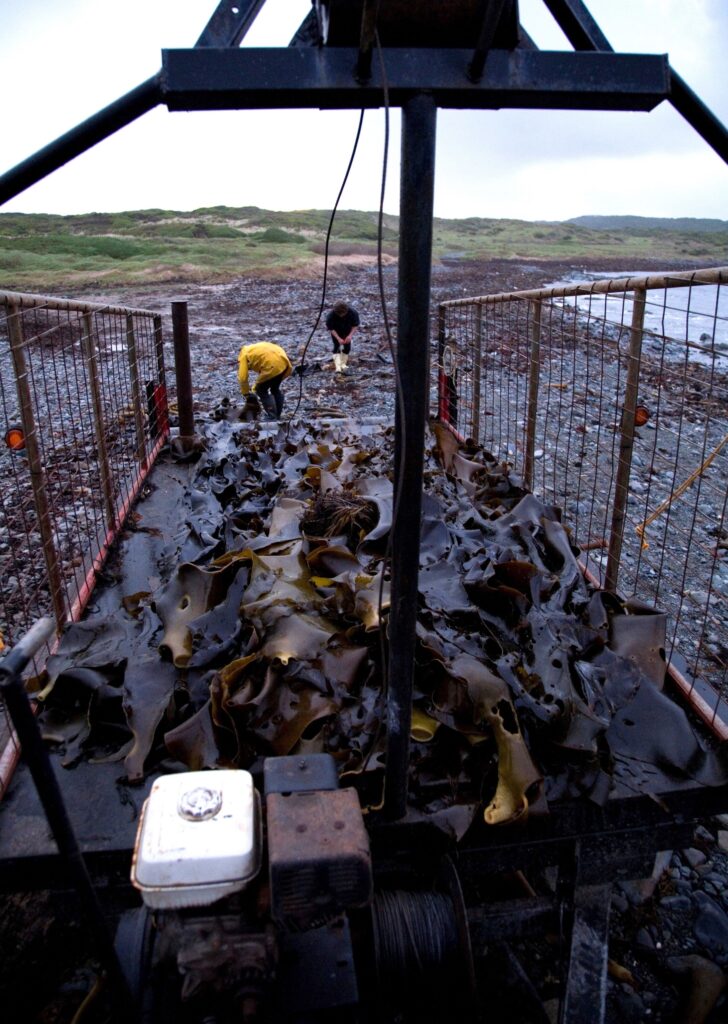Background

Photo credit: James Da Costa
Bull Kelp has ongoing significance to Tasmanian Aboriginal communities, with uses ranging from clothing and diet to domestic tools such as water vessels (Vicki West with Great Southern Reef; Thurston et al. 2018).
Beach-cast Bull Kelp is harvested commercially in Tasmania as part of the Marine Plant Fishery. Harvesting is conducted by hand collection, sometimes with winch assistance or with a mechanical harvester and mechanical grab (Velásquez et al. 2020). While some Bull Kelp is taken from isolated areas on the north, northeast, and southeast coasts, most of the harvest comes from King Island and the west coast (Granville Harbour and the Northwest area) (Wild Fisheries Management Branch 2024).
Dried kelp is processed only by licenced processors. King Island kelp is processed by Kelp Industries Pty Ltd, which mainly exports to the UK for the production of alginates. Granville Harbour kelp is processed by Kelpomix Tasmania, which produces agricultural and gardening products sold mostly within Australia.
Bull Kelp has been harvested in Tasmania since the 1970s (Kelp Industries) and formal assessments of the fishery have been infrequently conducted since then. The most recent assessment of the King Island Bull Kelp fishery was conducted in 2011.



